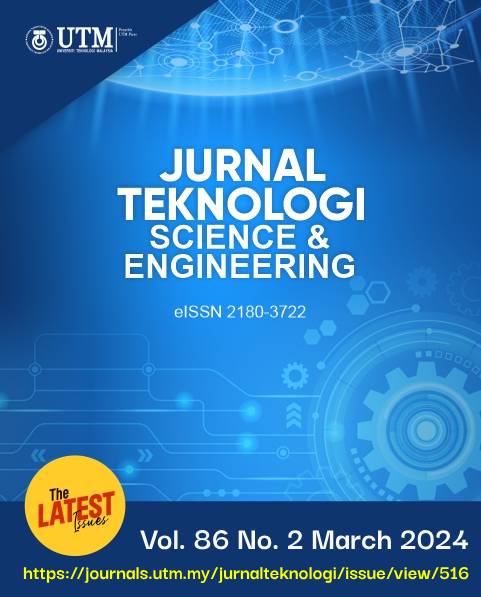MODELLING AND INTEGRATING OF EXPERIMENTAL ANALYSIS FOR PREDICTING THE PARAMETERS OF KENAF FIBRE-REINFORCED CONCRETE BEAM-COLUMN JOINT
DOI:
https://doi.org/10.11113/jurnalteknologi.v86.20912Keywords:
Beam, Column, Models, Joint, Parameters, Kenaf, Fibre, GeneXprotools 5.0Abstract
To lessen the environmental impact of infrastructure projects, the construction sector has recently demonstrated a growing interest in sustainable materials. Kenaf fibre-reinforced concrete (KFRC), which has improved mechanical qualities and biodegradability, has emerged as a possible eco-friendly substitute. The intricate interactions between material composition, geometrical factors, and load-bearing capacities make it difficult to optimise the design of structural parameters of KFRC beam-column joints. The beam-column joints used in this study were designed based on ACI 318-19 shear criteria. This study suggests a novel method for precisely predicting the parameters of kenaf fibre-reinforced concrete beam-column (KFRC-BC) joints by combining machine learning modelling and experimental investigation. Experimental data are carefully documented to establish the reality, including load-displacement responses and beam-column joint parameters such as shear, stiffness, ductility, crack load, energy absorption, and ultimate load. These data were used in the modelling through GeneXproTools 5.0 (GEP) and an empirical relationship with mathematical expressions has been proposed for each joint parameter. R2 statistical analysis is used to evaluate the model’s efficacy. In addition, it has been demonstrated by varying intensity and correlation that deep learning may be used to determine the precise concrete structure parameters in civil engineering without the need for experimental research. The shear spacing could be increased by 25% to 50%. Concrete strength influences all these characteristics.
Downloads
Published
Issue
Section
License
Copyright of articles that appear in Jurnal Teknologi belongs exclusively to Penerbit Universiti Teknologi Malaysia (Penerbit UTM Press). This copyright covers the rights to reproduce the article, including reprints, electronic reproductions, or any other reproductions of similar nature.
















